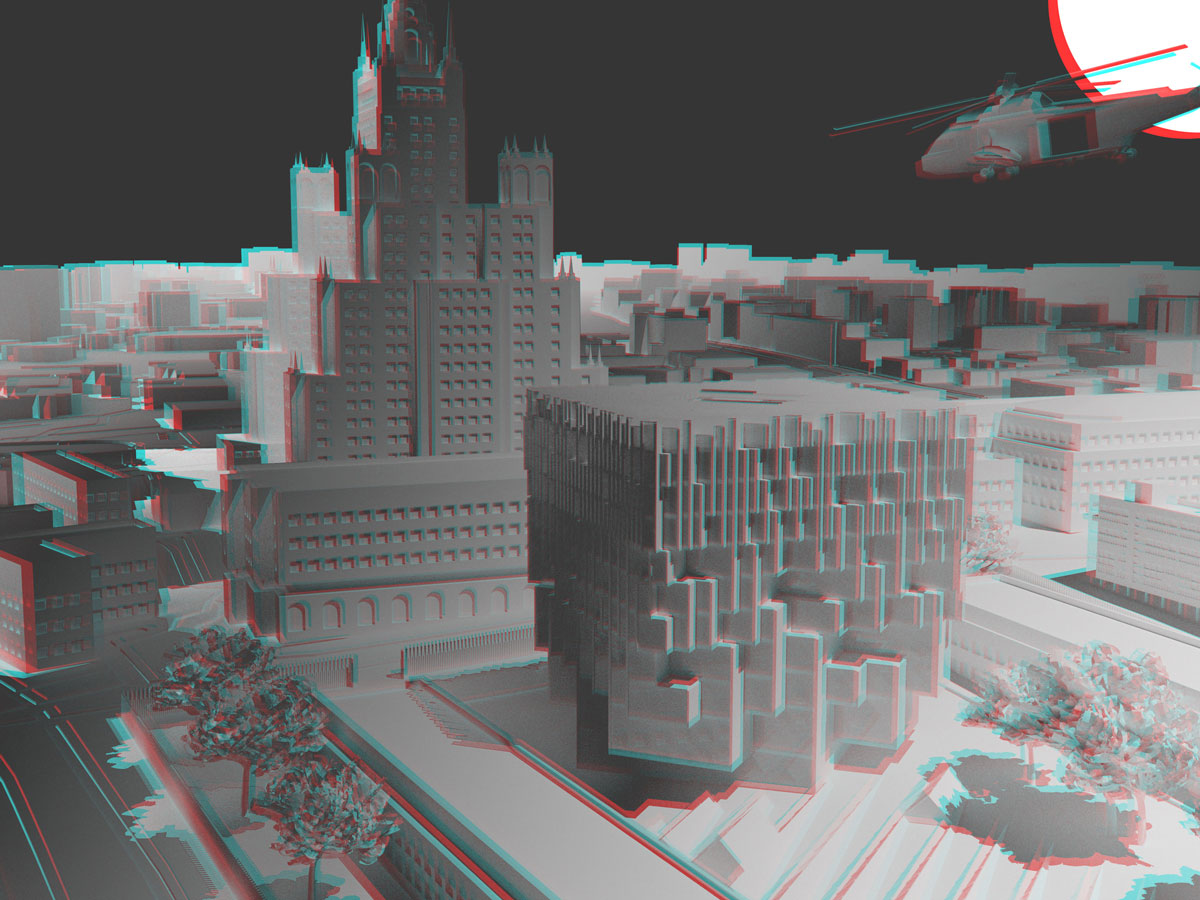Ian Miley (MArch I AP ’20)
Diplopia (n.) describes a disorder of vision in which two images of a single object are seen. Situated among other disciplinary -opias, diplopia is re-imagined to invoke a double place, more narrowly, a space for diplomacy. Our modern concept of diplomacy emerged in the Italian Renaissance in the formalization of epistolary exchange between sovereign states. Ancestral letters – or diplomas – on the one hand an official state document conferring privilege, on the other simply a paper folded twice over, fold revelation within the act of concealment. This is the duplicitous act upon which diplomatic practices are founded. Since its emergence as a genre of space, the diplomatic setting has been framed by dramaturgical and optical techniques intended to produce a doubling of reality.
This thesis considers the Embassy for the U.S. diplomatic mission to the Russian Federation in Moscow — a structure implicated in a history of espionage, riddled with listening devices, procured via labyrinthine construction contracts. The reciprocal subversions performed across the Iron Curtain during the Cold War — succinctly illustrated in MAD Magazine’s Spy vs. Spy comic strips — appear to have been recently reanimated. Through the interplay of illusionistic techniques drawn from the ecclesiastical chancel, 1960s Op-Art, and recursive computation, distortive methods propose a dialectic of concealment and revelation in architecture. Stagecraft and statecraft conspire to project the possibility of built form through the production of doubt.
Project Acknowledgments
Rhetorical support: Samantha Vasseur (MArch, MDes HPDM ’21)
Drawing support: Samantha Vasseur (MArch, MDes HPDM ’21), Ian Bankhead (MArch ’22), Aleksis Bertoni (MArch ’18), Cynthia Deng (MArch, MUP ’21), Isabel Tiange Wang (MArch ’22)
Rendering support: Jung In Seo (MIT MArch ’20), Dalma Földesi (MIT MArch ’20), Danmo Fu (MArch ’22), Glen Marquardt (MArch ’21)
